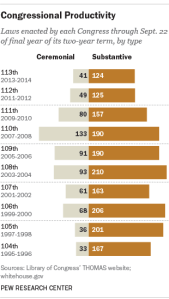
In last week’s Hobby Lobby decision, Justice Samuel Alito held that the Affordable Care Act’s contraceptive mandate violated the rights of “for-profit, closely held corporations” under the Religious Freedom Restoration Act, or RFRA. Which left a lot of people, including us, wondering: Just what did Alito mean by a “closely held” corporation, and how many such businesses (and their employees) might be affected by his ruling?
In general, a closely held corporation is one with only a limited number of shareholders. By definition, they are private companies, meaning their shares don’t trade publicly. Alito didn’t specify how many shareholders a company could have in order to assert a RFRA claim, noting only that Hobby Lobby and the other companies in the case were “owned and controlled by members of a single family.” Different government agencies, though, have their own rules regarding corporations with relatively few shareholders.
The IRS has the clearest definition: For corporate tax purposes, a closely held corporation is one where more than half of the stock is owned (directly or indirectly) by five or fewer individuals at any time in the second half of the year. (It also can’t be a “personal service corporation,” such as a law firm or engineering firm owned by its employees.) The IRS says it doesn’t track how many such closely held corporations there are.
However, there’s another category of corporations that could be considered closely held: “S corporations,” which cannot have more than 100 shareholders (although all members of the same family are treated as a single shareholder). Oklahoma City-based Hobby Lobby is organized as an S corporation. Unlike regular corporations, S corporations don’t pay income tax themselves. Instead, their profits and losses are passed through to their shareholders, who then report them on their own personal tax returns. According to the IRS, in 2011 there were 4,158,572 S corporations; 99.4% had 10 or fewer shareholders.
How many people work for such corporations? The Census Bureau estimates that in 2012 about 2.9 million S corporations employed more than 29 million people (many corporations don’t have employees), though its figures aren’t broken down by number of shareholders.
While all closely held corporations are private, not all private companies are closely held. And while many closely held corporations are small, some are quite large. Family-owned Cargill, for example, employs 140,000 people and had $136.7 billion in revenue in fiscal 2013. Forbes magazine lists 224 private companies (not all of which would be considered closely held) with annual revenues in excess of $2 billion. Hobby Lobby ranks 135th on Forbes’ list, with estimated revenues of $3.3 billion and an estimated 23,000 employees.
Another distinction is drawn by U.S. securities law, which generally requires companies with at least 2,000 shareholders (or 500 “unaccredited” shareholders, meaning members of the general public) to register with the Securities and Exchange Commission. While the Census Bureau estimates there are nearly 6 million corporations and partnerships with employees, an SEC spokeswoman told us that approximately 9,000 companies are registered with the agency.
Some legal observers have noted that, despite Alito’s emphasis on the “closely held” nature of Hobby Lobby and the other companies that challenged the contraceptive mandate, nothing in the language or logic of his opinion would prevent corporations with more diffuse ownership from claiming exemptions under RFRA from other types of federal mandates, though others say making such claims stick would prove difficult.

